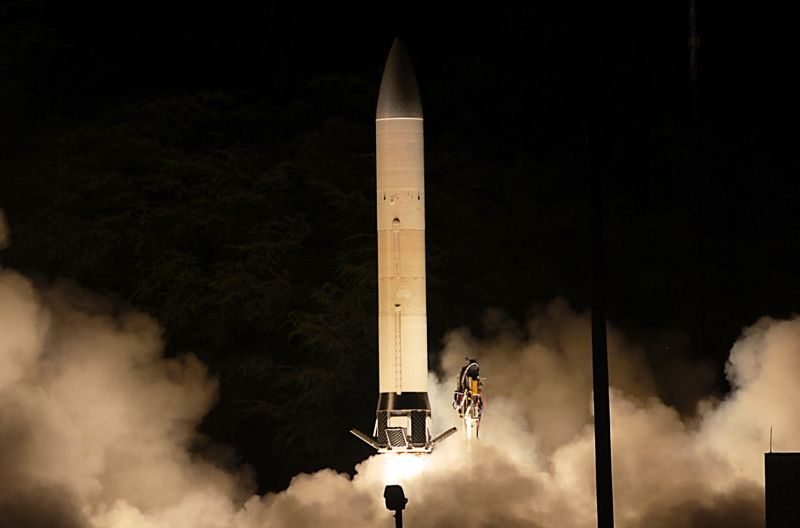At the U.S. Army Space and Missile Defense Command/Army Forces Strategic Command, successes sometimes happen faster than a speeding bullet.
In a flight which lasted less than 30 minutes, USASMDC/ARSTRAT conducted the first test flight of the Advanced Hypersonic Weapon concept Nov. 17. The AHW is a first-of-its-kind glide vehicle, designed to fly within the earth’s atmosphere at hypersonic speed and long range, was launched from the Pacific Missile Range Facility, Kauai, Hawaii, to the Reagan Test Site, U.S. Army Kwajalein Atoll, Marshall Islands.
“It is a first-of-its-kind glide vehicle that has a potential to change warfare forever,” said Lt. Gen. Richard P. Formica, SMDC commanding general. “It is a great example of how the material development function in the SMDC Technical Center is a part of ARSTRAT that is developing future capabilities for U.S. Strategic Command – for ‘the day after tomorrow.'”
The Army’s Advanced Hypersonic Weapon Technology Demonstration is a cooperative effort within the Department of Defense to develop a conventional Prompt Global Strike capability. More specifically, the AHW-TD is an all endo-atmospheric boost glide, non-ballistic, missile flight that will advance state-of-the art thermal protection materials, enabling and integrating systems such as controls and communications, and internal thermal management schemes.
Further, in-flight environmental data collection will advance the understanding and modeling efforts for all Prompt Global Strike concepts such as the Conventional Strike Missile being developed by the Air Force.
The conical-shaped AHW is designed to meet the demanding environments and operations of Continental United States-based systems capable of global strikes. As a precision glide body flying at supersonic speeds, the AHW can deliver a variety of payloads at medium and global ranges.
“This was a total team effort with Sandia National Laboratories, Albuquerque, N.M.; the U.S. Army Aviation and Missile Research Development and Engineering Center, Huntsville, and under the direction and funding of the Office of the Secretary of Defense’s Prompt Global Strike,” Formica said.
Hypersonic flight is defined as speeds of Mach 5, which is about 3,600 mph, or higher.
The objective of the test is to collect data on hypersonic boost-glide technologies and test range performance for long-range atmospheric flight. Mission emphasis is aerodynamics; navigation, guidance, and control; and thermal protection technologies.
“Two key technical challenges that the flight test addressed was thermal protection/thermal management and navigation, guidance and control,” said Debra Wymer, SMDC Technical Center director.
The AHW program is managed and executed by the SMDC program office in Huntsville. The booster system and glide vehicle were developed by Sandia National Laboratories and the thermal protection system by the AMRDEC.
“The success of the AHW test is a solid step toward demonstrating the technology required to achieve a conventional prompt global strike capability,” Wymer said.
A three-stage booster system launched the AHW glide vehicle and successfully deployed it on the desired flight trajectory. The vehicle flew a non-ballistic glide trajectory at hypersonic speed to the planned impact location at the Reagan Test Site. Space, air, sea and ground platforms collected vehicle performance data during all phases of flight. The data collected will be used by DOD to model and develop future hypersonic boost-glide capabilities for Conventional Prompt Global Strike.
“It was great to have a successful launch,” said Jerry Esquibel, AHW program manager. “I was following it along its trajectory profile and when it went into its glide phase we considered it a success.
“This is a great team,” he added. “Many organizations came together in order to make this happen. I am proud of everyone involved.”










